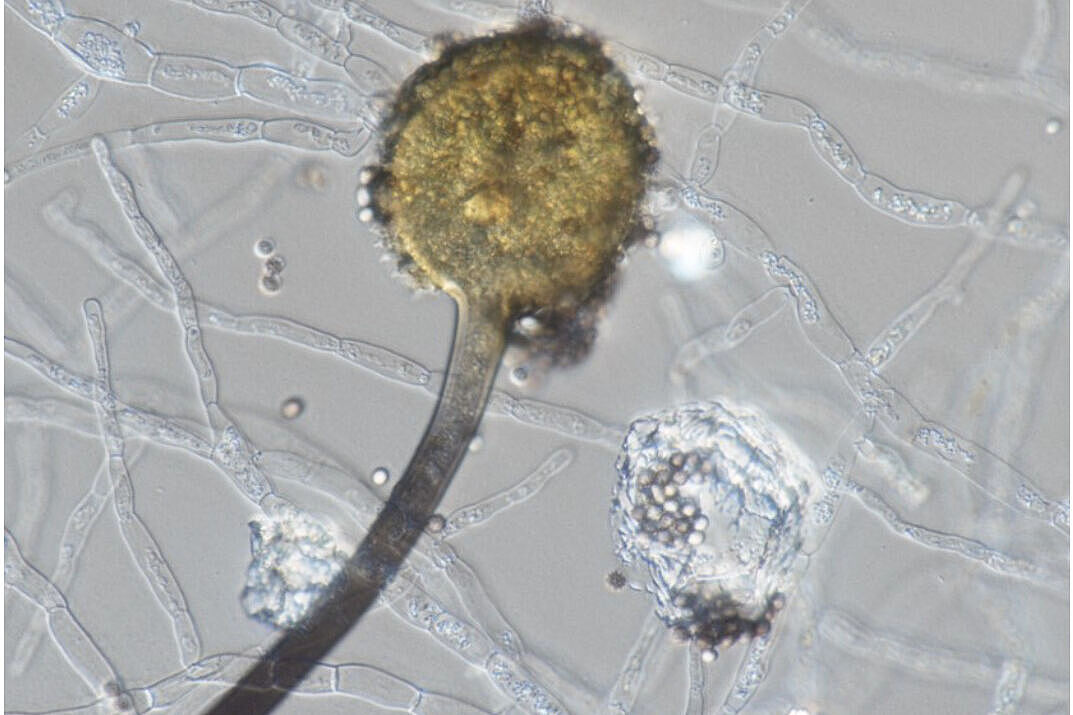This endeavour sounds insignificant and difficult to implement, but this is not the case on either count. The great kingdom of fungi ekes out a shadowy existence alongside the other two kingdoms of eukaryotic organisms – plants and animals. Yet without fungi there would be no penicillin, no beer and no yeast braid. Similar to a digestive system, they promote the decomposition of organic substances in water and are also a source of food for animals. Aquatic fungi are threatened by pollutants such as fungicides washed into the water that they are not intended to control. Bioassays and better monitoring would be useful to help protect fungi.
"Aquatic fungi are tiny, ubiquitous, and an important part of the 'digestive system' in water bodies," stated IGB researcher Prof. Hans-Peter Grossart, author of the study.
Aquatic fungi occur in all types of water bodies, in small puddles, large oceans, and even in ice and snow. There are only rough estimates of fungi as a percentage of microorganisms in the different types of water – in freshwaters, they are thought to account for as much as 50 per cent of microorganisms with a cell nucleus. What makes them so important: aquatic fungi "masticate". They break down nutrients from dead plant material, making it more readily available for other organisms in the water. Together with other microorganisms, they play an important role in the "carbon pump". By ensuring that organic matter sinks to the depths of the water body, aquatic fungi make sure that other organisms get the food they need. They also help to break down pollutants: in 2012, a fungus that can decompose plastics was discovered for the first time by researchers in the Amazon.
Largely unknown, hence "microbial black matter"
However, there is virtually no other group of organisms on our planet about which so little is known as fungi in inland waters. Researchers therefore also refer to aquatic fungi as "microbial black matter" if they have not yet been cultivated and propagated successfully in the laboratory. Moreover, aquatic fungi have been completely overlooked as a conservation priority. "So far, the IUCN Red List of Threatened Species includes assessments for only a small number of fungi, and all of those assessed were terrestrial macrofungi," stated Mariyana Vatova from the University of Algarve in Portugal, one of the lead authors of the study. "What complicates such assessments is that many groups of aquatic fungi are poorly studied, and many species have yet to be discovered and described."
Fungicides are not the only problem
The few studies that do address potential human impacts on aquatic fungi focus almost exclusively on the risks posed by fungicides. Besides controlling their intended (usually terrestrial) targets, fungicides also affect non-target species, impairing the structure of aquatic fungal communities. They have a negative impact on fungal biomass and diversity, and disrupt essential functions, such as the decomposition of organic matter. "What is even more worrying is that we know next to nothing about the other threats to which they are probably exposed. Many other pollutants, such as pharmaceuticals, metals, microplastics and nutrients, may also be affecting fungi and their delicate networks,“ remarked Hans-Peter Grossart from IGB. Moreover, fungi are probably affected by the same factors as other aquatic organisms, which include habitat degradation, invasive species and climate change.
If you are unaware of the hidden losses, you cannot prevent them
Such threats can lead not only to species extinctions in aquatic fungal communities, but also to population declines and even to a total loss of their key functions in the ecosystem, which can ultimately produce cascading effects in aquatic food webs. "Unfortunately, due to large gaps in our knowledge, many such cases are likely to go undetected and remain hidden," explained Ivan Jarić, the initiator of the study from the Biology Centre of the Czech Academy of Sciences. "Such cryptic losses of ecosystem functions can aggravate the situation further, by hindering our ability to implement timely and effective conservation measures."
Previous protection measures for water bodies could easily be adapted to the characteristics of fungi
"The protection of aquatic fungi urgently needs to be recognised as a priority for the management of water bodies," commented Hans-Peter Grossart. This should include both the protection of fungal diversity and the maintenance of their important ecosystem functions.
After all, it is likely that fungi are often helped by the same measures that promote other aquatic organisms: reducing nutrient loads and pollutants, controlling the routes by which invasive species are introduced into water bodies, and identifying, protecting and restoring important freshwaters and habitats for aquatic biodiversity. However, such measures may need to be adapted to the specificities of fungi. "It would therefore be important not only to work towards the adoption of stringent measures against pollution sources, but also to develop and apply new, standardised fungal bioassays," concluded Hans-Peter Grossart.
This study also represents part of the efforts of the Alliance for Freshwater Life (allianceforfreshwaterlife.org) and of the IUCN SSC Fungal Conservation Committee (FunCC).
A brief aside: fungicides have an effect on parasitic yeast fungi in water
IGB scientist Justyna Wolinska investigated the antiparasitic potential of three fungicides on Daphnia and its parasitic yeast (D. magna × M. bicuspidata). The study showed that azole fungicides can disrupt host–parasite interactions in natural systems. This finding could have far-reaching consequences, especially given the growing evidence on the ecological importance of parasites.


